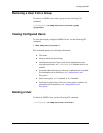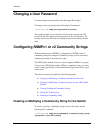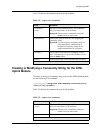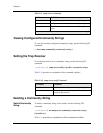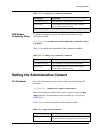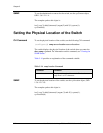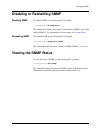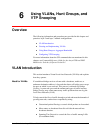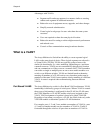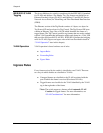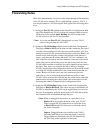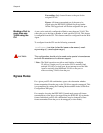
User Guide for the Avaya P580 and P882 Multiservice Switches, v6.1 6-1
6
Using VLANs, Hunt Groups, and
VTP Snooping
Overview
The following information and procedures are provided in this chapter and
pertain to layer 2 and layer 3 module configurations:
■ VLAN Introduction
■ Creating and Implementing VLANs
■ Using Hunt Groups to Aggregate Bandwidth
■ Configuring VTP Snooping
For more information about the CLI commands that are mentioned in this
chapter, see Command Reference Guide for the Avaya P580 and P882
Multiservice Switches, Software Version 6.1.
VLAN Introduction
This section introduces Virtual Local Area Networks (VLANs) and explains
how they operate.
Need for VLANs If a traditional bridge receives a frame with a broadcast, multicast, or
unknown destination address, it forwards the data to all bridge ports except
the port on which it was received. This process is referred to as bridge
flooding. As networks grow and the amount and types of traffic increase,
bridge flooding may create unnecessary traffic problems that can clog the
Local Area Networks (LAN).
To help control the flow of traffic through a switch and meet the demands of
growing networks, vendors have responded by using:
■ Customized packet filtering to control which packets are forwarded.
■ More routers as broadcast firewalls to divide the network into
broadcast domains.
■ Spanning Tree Protocol to control the flow of traffic among LANs
(for redundant links).



